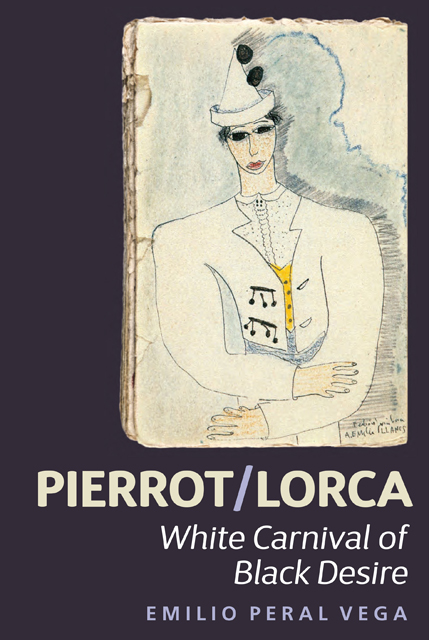Book contents
- Frontmatter
- Dedication
- Contents
- List of Illustrations
- Acknowledgements
- Prologue
- 1 A Modern Mask: From Deburau to The Tramp
- 2 First Examples of an Effeminate Pierrot: From Verlaine to Lorca
- 3 Pierrot/Lorca: Alter Ego for a Young Poet
- 4 Lorca/Pierrot: Between Painting and Theatre
- 5 Love Game and Masquerade: Dalí/Lorca
- 6 Perlimplín/Lorca/Pierrot: Frustrated Desire
- 7 A White Clown for a Black Desire: El público and Así que pasen cinco años
- Epilogue
- Bibliography
- Index
2 - First Examples of an Effeminate Pierrot: From Verlaine to Lorca
Published online by Cambridge University Press: 22 February 2023
- Frontmatter
- Dedication
- Contents
- List of Illustrations
- Acknowledgements
- Prologue
- 1 A Modern Mask: From Deburau to The Tramp
- 2 First Examples of an Effeminate Pierrot: From Verlaine to Lorca
- 3 Pierrot/Lorca: Alter Ego for a Young Poet
- 4 Lorca/Pierrot: Between Painting and Theatre
- 5 Love Game and Masquerade: Dalí/Lorca
- 6 Perlimplín/Lorca/Pierrot: Frustrated Desire
- 7 A White Clown for a Black Desire: El público and Así que pasen cinco años
- Epilogue
- Bibliography
- Index
Summary
Paul Verlaine’s work represents the first homoeroticised reading of Pierrot, where the character becomes a reflection of the poet and an expression of his melancholic spirit of inevitable defeat. Verlaine’s first examination of this modern icon is from 1868, under the laconic title ‘Pierrot’. Our buffoon, sick of a tradition that has turned him into a ridiculous puppet, takes up the gauntlet for a generation of creators, all of whom identify him as the most refined reflection of t heir own bohemian loser essence above any other qualities. This Pierrot, from the very first line, refuses his comic role in the service of the troupe of tumblers made up of harlequins, columbines and pulcinellas: ‘Ya no es el soñador lugar de la canción antigua.’ This mask is reborn from his ashes and is now observed under a cold and expressionistic light: ‘pálida blusa […] sudario’, ‘ave nocturna’, ‘ojos […] grandes agujeros que borbotean fósforo’, ‘faz exangüe’, ‘nariz puntiaguda y moribunda’. In the style of Jadis et naguère, Verlaine thus portrays a moth-eaten Pierrot who is still a source of inspiration for others who share his anxieties – embodied in the deathly expression which, far from being humorous, begs for mercy – and, above all, the incomprehension and loneliness that come with the mask – ‘signos locos, a los que nadie responde’.
However, ‘Pierrot gamin’ is the work in which Verlaine develops the revolutionary portrait of the mask. The poem combines the model forged by Jean-Gaspard Deburau at the start of the century, above all in terms of the communicative potential ascribed to the character – ‘el muchachuelo sabe poner/ en sus ojos fulgor de acero’ – and the cruel and virtually demonic Pierrot who would become a favourite at the end of the nineteenth century, based on the English model of the Hanlon-Lees (Bonnet, 2014), which became dominant in France thanks to Hennique and Huysmans. In spite of its length, I should like to present the entire poem here, given its relation to the works of Federico García Lorca, who may have had access to it thanks to Manuel Machado’s translation:
Ce n’est pas Pierrot en herbe
Non plus que Pierrot en gerbe,
C’est Pierrot, Pierrot, Pierrot.
- Type
- Chapter
- Information
- Pierrot/LorcaWhite Carnival of Black Desire, pp. 31 - 42Publisher: Boydell & BrewerPrint publication year: 2015



